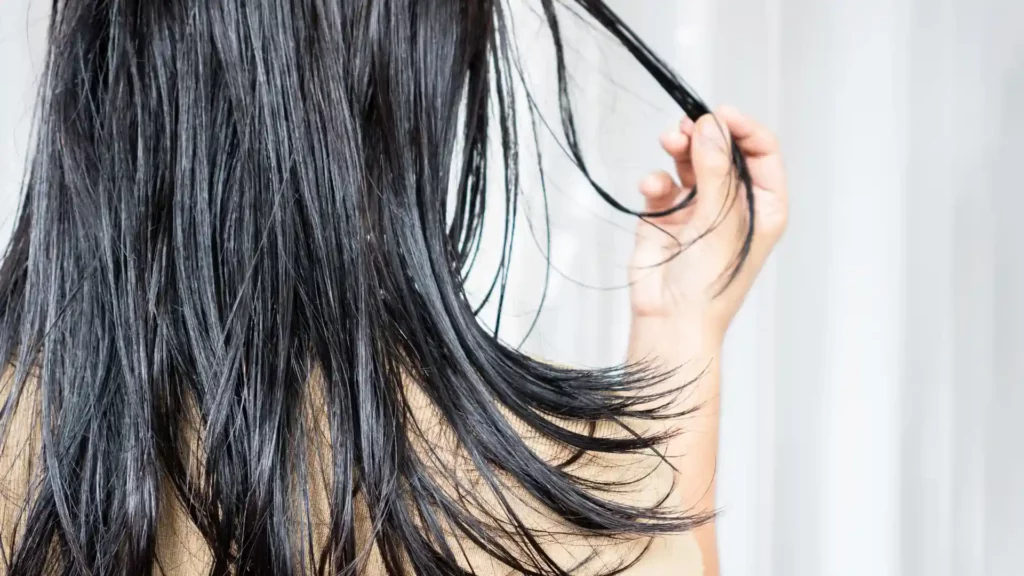Determine and Understand Your Hair Type
Understanding your hair type is essential when crafting a hair care routine that nurtures and enhances the natural beauty of your locks. Each dimension of your hair type, from your curl pattern and texture to your hair’s porosity and oiliness, requires different attention and care. Embracing your hair’s natural qualities leads to healthier hair and a more confident and personalized expression of your unique style.
Understanding Curl Patterns
Your curl pattern is a fundamental part of your hair type, and understanding it is key to optimizing your hair care. Hair is typically categorized into four main types: straight (type 1), wavy (type 2), curly (type 3), and coily (type 4). Each type has subcategories (like 3A, 3B, etc.) that further define the curl pattern.
To identify your curl pattern, observe your hair when it’s in its most natural state, ideally after a wash and without any styling products. Here’s a quick guide:
- Type 1 (Straight): Hair has no natural curl and is completely straight.
- Type 2 (Wavy): Hair forms an “S” shape. Type 2A is a loose, gentle wave, while 2B and 2C have more defined and pronounced waves.
- Type 3 (Curly): Hair forms loops or spirals. Type 3A curls are loose, 3B curls are medium, and 3C curls are tight.
- Type 4 (Coily): Hair has a tight coil or zig-zag pattern. Type 4A coils are soft, 4B are more defined, and 4C have the tightest coils with the least definition.
Adjusting your routine to match your curl pattern can greatly enhance the health and appearance of your hair. For straight hair and looser waves, lightweight styling products and mousses can define hair without weighing it down. For tighter curls, hydration is crucial, and cream-based stylers to define and nourish hair can provide that hydration. Coily hair benefits from deep conditioning treatments and heavier creams or butters.
Hair Texture and Diameter
Hair texture and diameter refer to the thickness of individual hair strands, which are typically categorized as fine, medium, or thick (coarse). To determine your hair’s texture and diameter, take a single strand and roll it between your fingers:
- Fine Hair: Feels almost like nothing between your fingers. It’s delicate and easily damaged.
- Medium Hair: Feels like a cotton thread. It’s not too fine or too thick and is relatively strong.
- Thick (Coarse) Hair: Feels sturdy and noticeable between your fingers. It tends to be stronger but can also be more resistant to styling and moisture.
Fine hair thrives with lightweight, volumizing products and gentle styling, while medium hair can benefit from balanced moisturization and all kinds of styling products. Thick hair requires more intensive hydration, benefiting from leave-in moisturizers and treatments, and can handle less frequent washing.
Hair Density: Thin to Thick
Hair density refers to the number of individual hairs on your scalp. It’s usually classified as thin, medium, or thick. To gauge your hair density, pull a section of your hair to the side and see how much of your scalp is visible:
- Thin Density: More scalp is visible at the base of the hair. Hair might appear sparse.
- Medium Density: Scalp is visible but not prominently. Hair looks neither too thin nor too thick.
- Thick Density: Scalp is hardly visible. Hair looks full and voluminous.
Those with thin hair should focus on volumizing products that add body without weighing hair down, such as light mousses or thickening sprays. People with medium-density hair have more flexibility with products and styles. For dense hair, proper hydration from rich, moisturizing shampoos and conditioners makes hair shinier and more manageable.
Porosity: Your Hair’s Ability to Absorb Moisture
Hair porosity refers to your hair’s ability to absorb and retain moisture. Porosity is categorized as low, medium, or high. To determine your hair’s porosity, you can conduct a simple water test: drop a clean, dry strand of your hair into water and observe:
- Low Porosity: Hair floats on top. It has a tightly bound cuticle layer, making it difficult for moisture to penetrate and also to escape.
- Medium Porosity: Hair slowly sinks. Hair can retain a balanced amount of moisture.
- High Porosity: Hair sinks immediately. This could occur if the cuticle is damaged or has gaps, allowing the hair to absorb moisture easily and lose it just as quickly.
Tailoring your hair care routine to your hair’s porosity ensures effective moisturization and overall health. Opt for lightweight, liquid-based products for low-porosity hair and apply heat to aid absorption. Medium porosity hair benefits from a balanced routine with regular moisturization. High porosity hair requires rich, creamy products and protein treatments to strengthen and retain moisture.
Oiliness: Managing Scalp and Hair Health
To determine your hair’s oiliness level, observe your scalp’s natural oil production after you wash it. Generally, hair is either oily, medium, dry, or “combination,” meaning it has different characteristics in different spots:
- Oily Hair: If your hair gets greasy within a day of washing, it’s likely oily.
- Medium Hair: Hair that stays fresh for a couple of days post-wash is in the medium category.
- Dry Hair: Hair that often feels brittle or looks dull, along with a flaky scalp, indicates dryness.
- Combination Hair: Combination hair might result in an oily scalp but dry ends.
Those with oily hair can benefit from using clarifying shampoos to control excess sebum and avoiding heavy conditioners. For medium hair, a regular routine with balanced moisturization works well. For dry hair, focus on hydrating shampoos and deep conditioning treatments, and consider using oils or leave-in conditioners on the ends. Those with combination hair should treat their scalps and ends differently – a gentle shampoo for the scalp and richer moisturizers for the ends. Avoid over-washing, no matter your hair type, as this can strip natural oils and lead to excess oil production.
Unlock Your Hair’s Full Potential with Therapy Hair Studio
Discover the perfect harmony of style and health for your unique hair type at Therapy Hair Studio. Our team of experts crafts personalized hair care solutions that bring out your hair’s natural beauty and strength. Whether you’re looking to revitalize your curls, find the ideal products for your hair texture, or achieve a stunning new look, our stylists are here to guide you every step of the way. Contact us today at (713) 355-4247 to schedule an appointment!
Related Posts:







